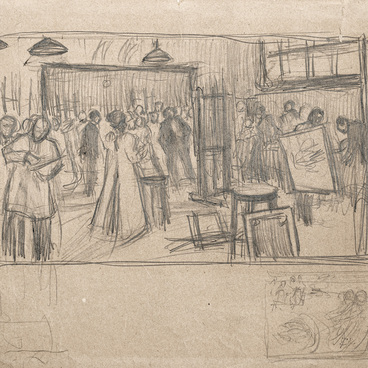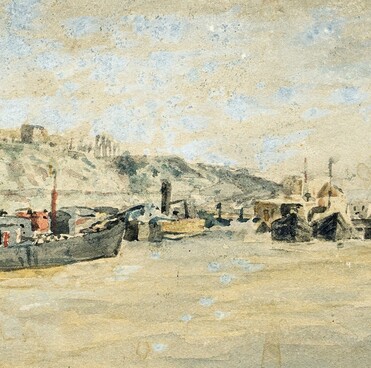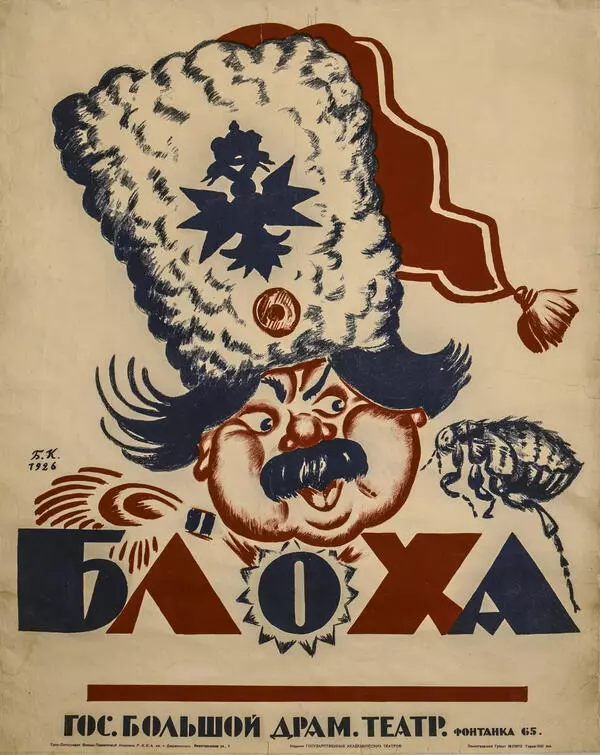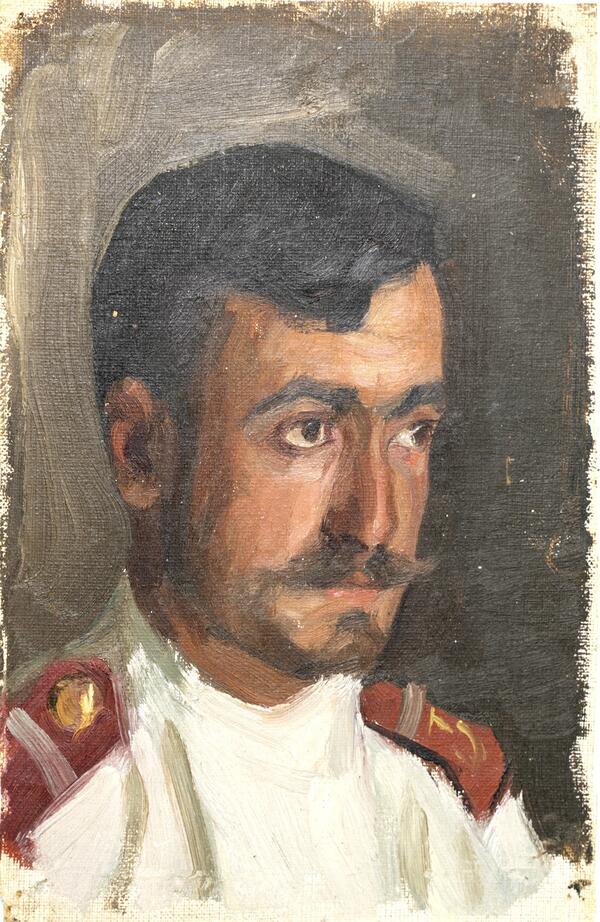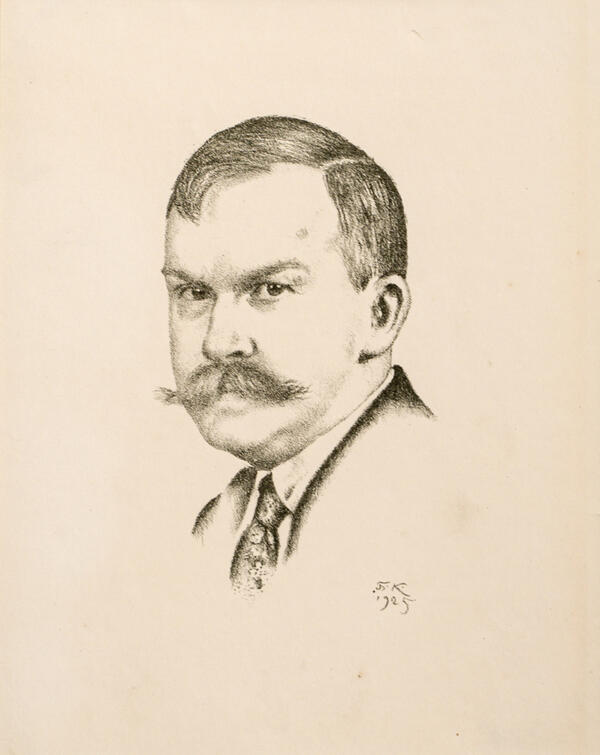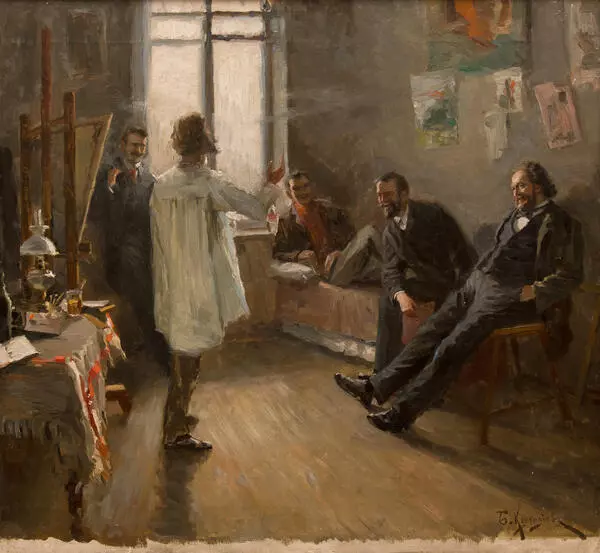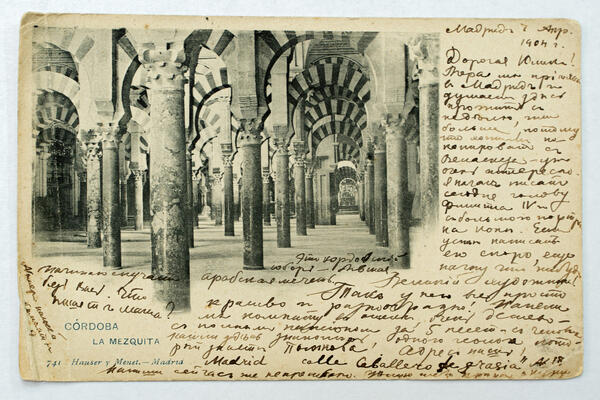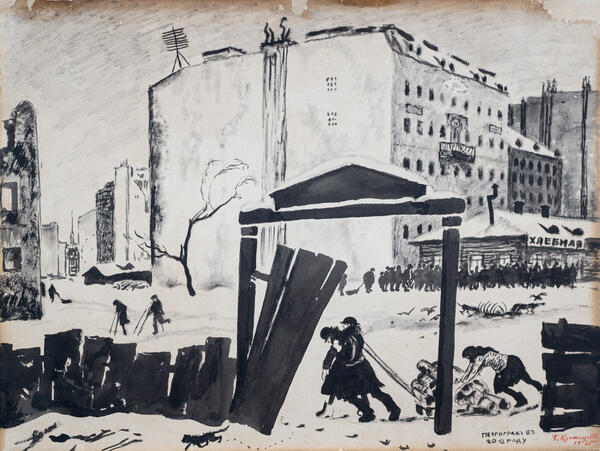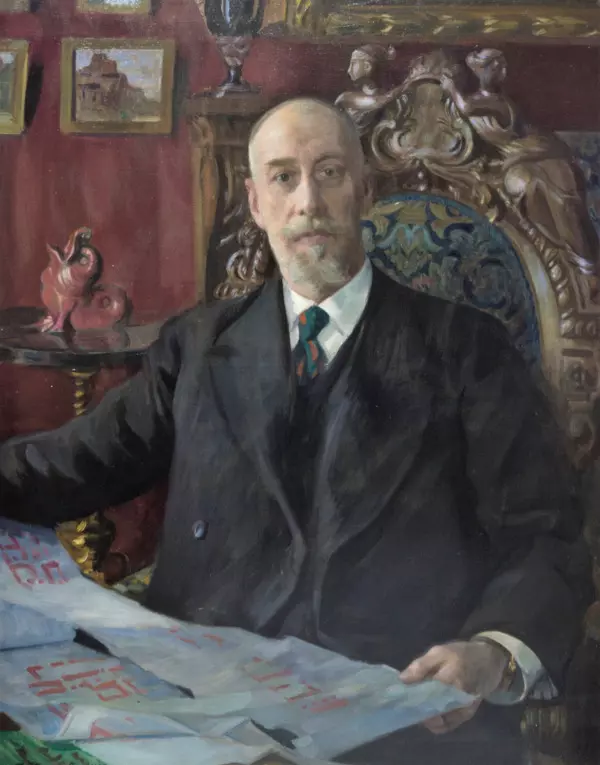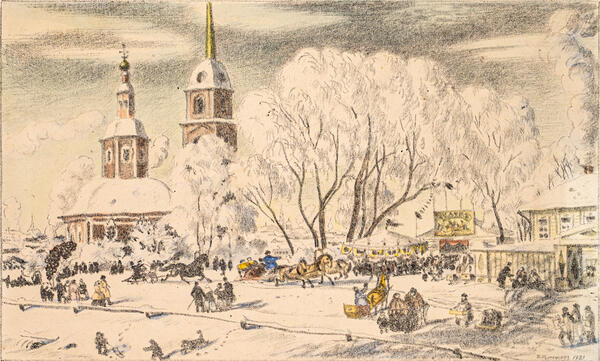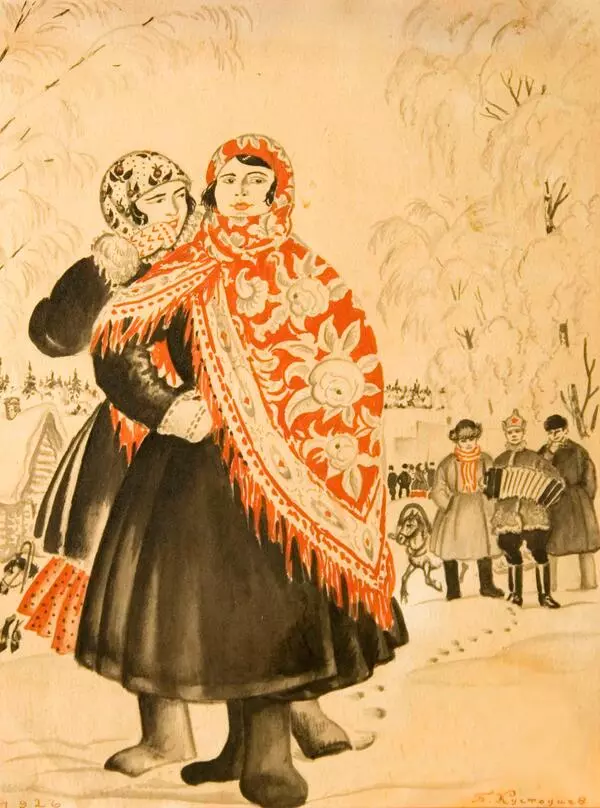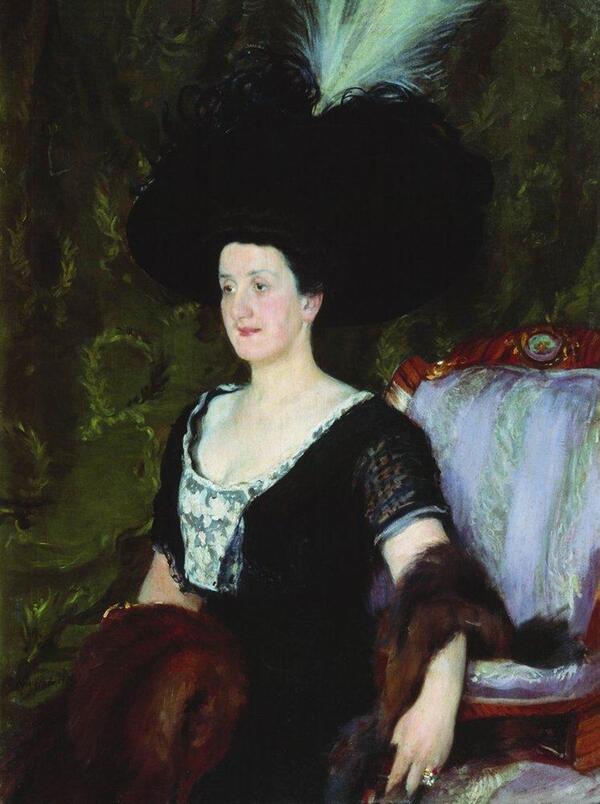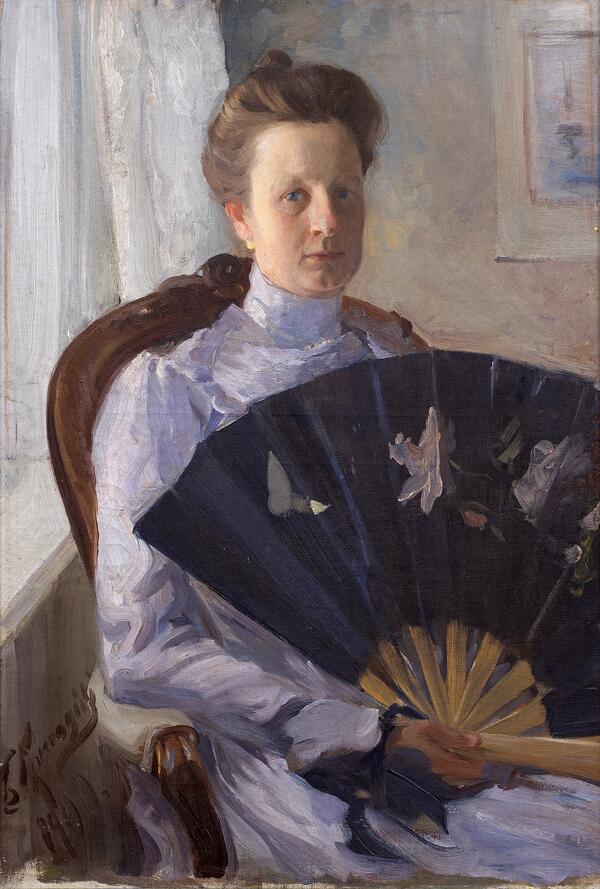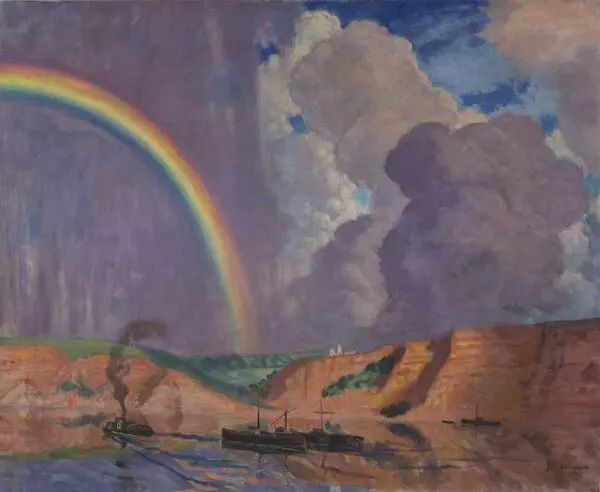The collection of the Boris Kustodiev House Museum includes “The Harvest”, a genre painting that speaks of Kustodiev’s knowledge of everyday village life.
Usually, Kustodiev’s countryside with its beauty, peace, and constancy represents the idealized harmony of a patriarchal society. Rural festivals, rich fairs, and peasant scenes are often arranged as a frieze. They have a horizontal composition, allowing the viewer to go over the images one by one, and admire them, moving from one group of characters to another. “The Harvest” was inspired by life in the Kostroma countryside where the Kustodievs visited the “Terem” house and art studio built in 1905. The painter fell in love with this region when he was working on his graduation painting “Village Fair”. In 1900–1903, he visited his friend Konstantin Mazin, collecting material, and traveled across the neighboring villages with him and Dmitry Stelletsky. They visited the villages of Maurino, Kozlovka, Kalganovo, and Semenovskoye-Lapotnoye. Having had the opportunity to observe peasants working in the field, the artist developed tremendous respect for the hard labor of these people maintaining Russia’s food system.
In this painting, Kustodiev depicted the season of harvest. By opting for a deliberately low horizon line on a square canvas, the artist conveyed the grandeur and power of nature, bestowing its generous gifts on those who work hard and diligently. “The Harvest” is distinguished by a captivating sky: while the evening sun is still shining bright and descending among the clouds, and the “heavenly fire” is blazing, there are already deep shadows, and it is getting dark in the forest far away in the background. The peasants are in a hurry, trying to get more work done before sunset. Their important and difficult work of harvesting is not yet complete. Women cut yellow ripe ears with sickles, bundle them into sheaves using hay ropes, and build the sheaves into stacks. It was a woman’s work, associated with the concepts of female strength, agility, and dexterity. The bright color palette makes the painting ornate, almost decorative.
This painting occupies a special place in the artist’s oeuvre because it formed the beginning of the Kustodiev collection in Astrakhan. It was purchased by Pavel Dogadin at the “Mir Iskusstva” (World of Art) exhibition in Moscow in 1916 and donated to Astrakhan along with his entire art collection in 1918.

